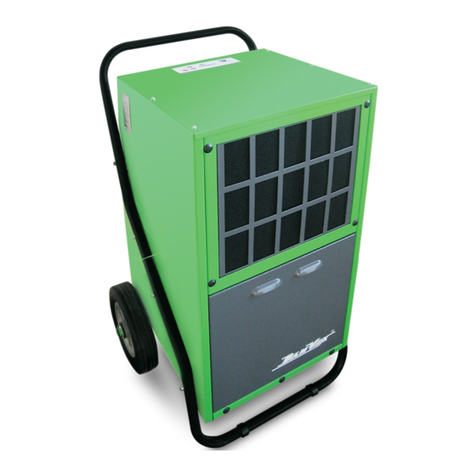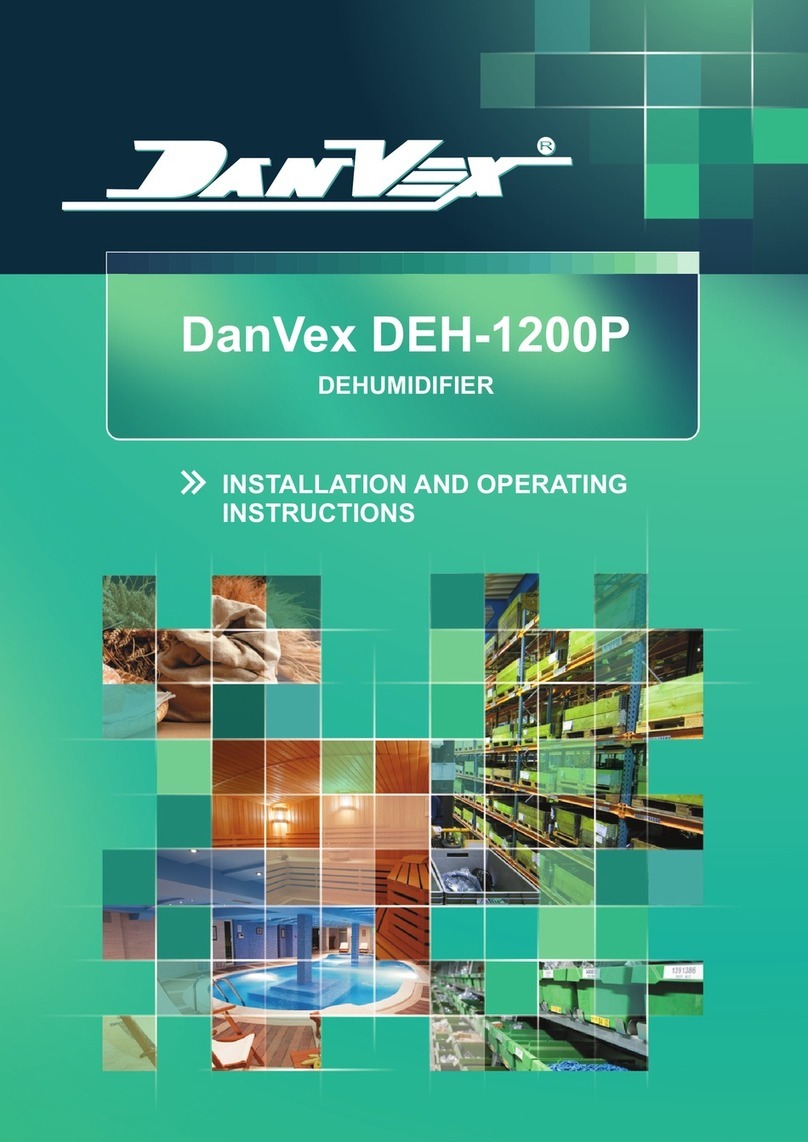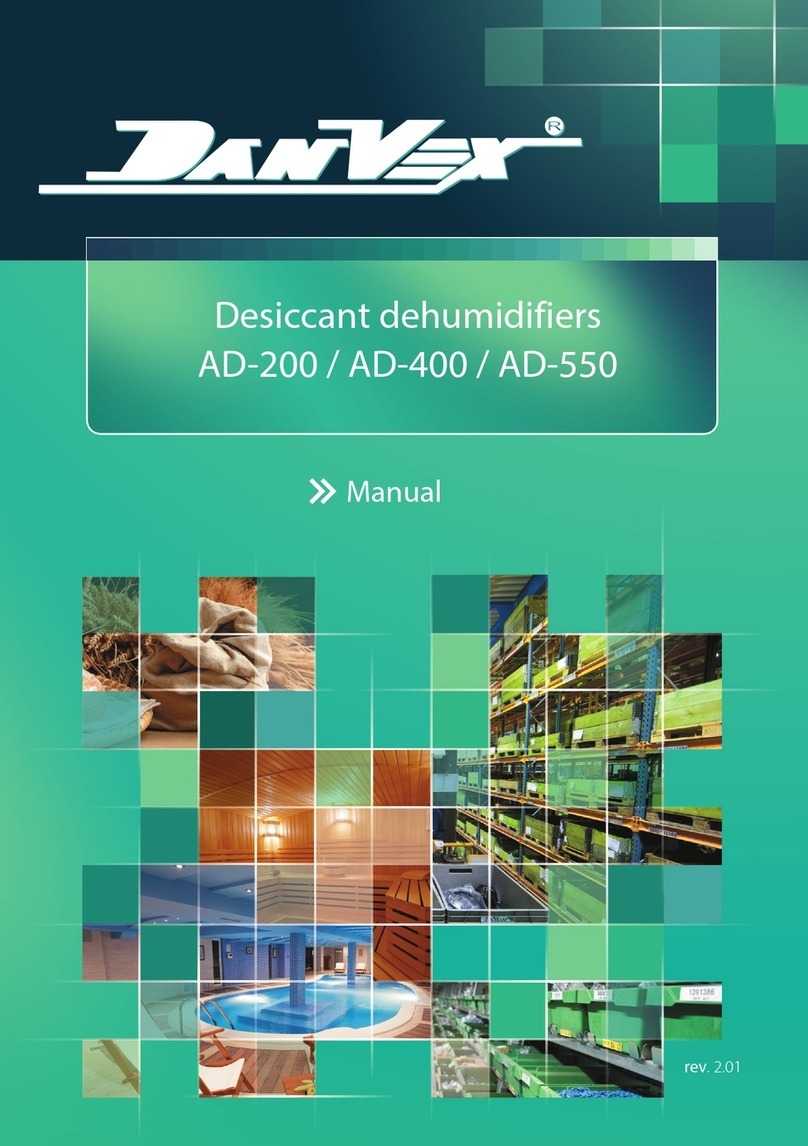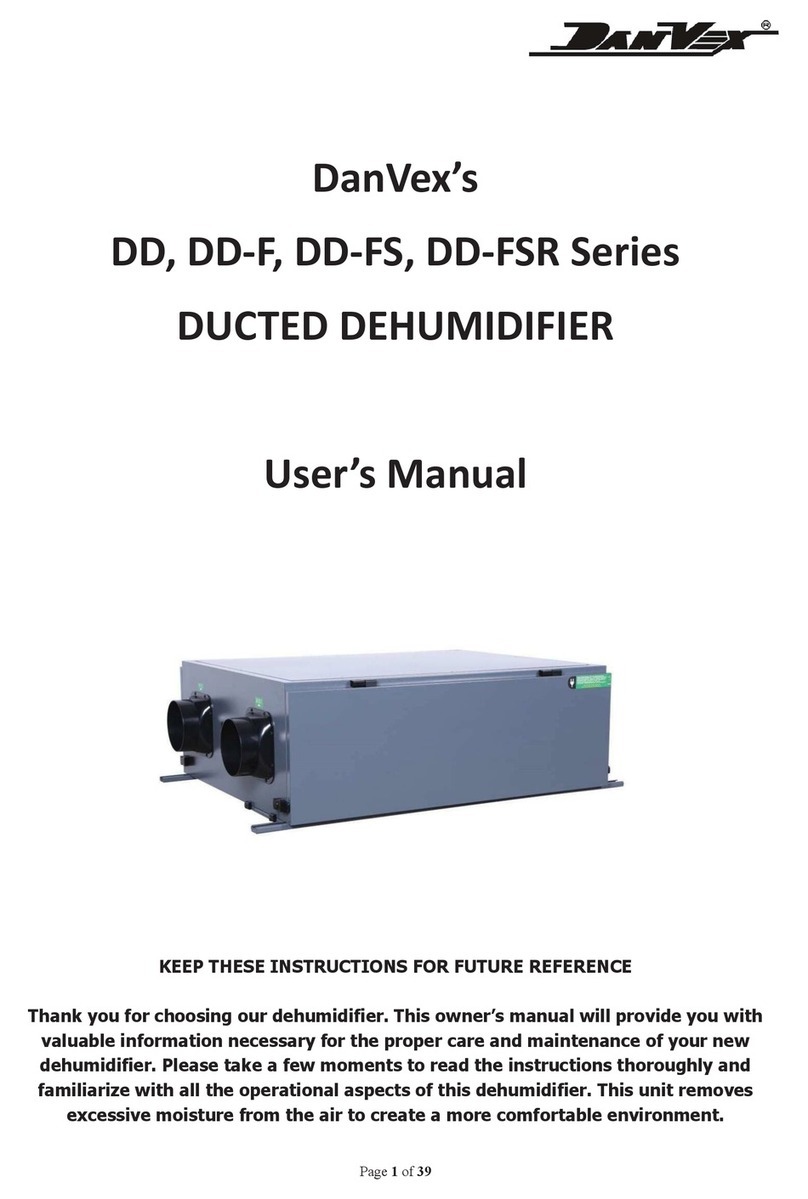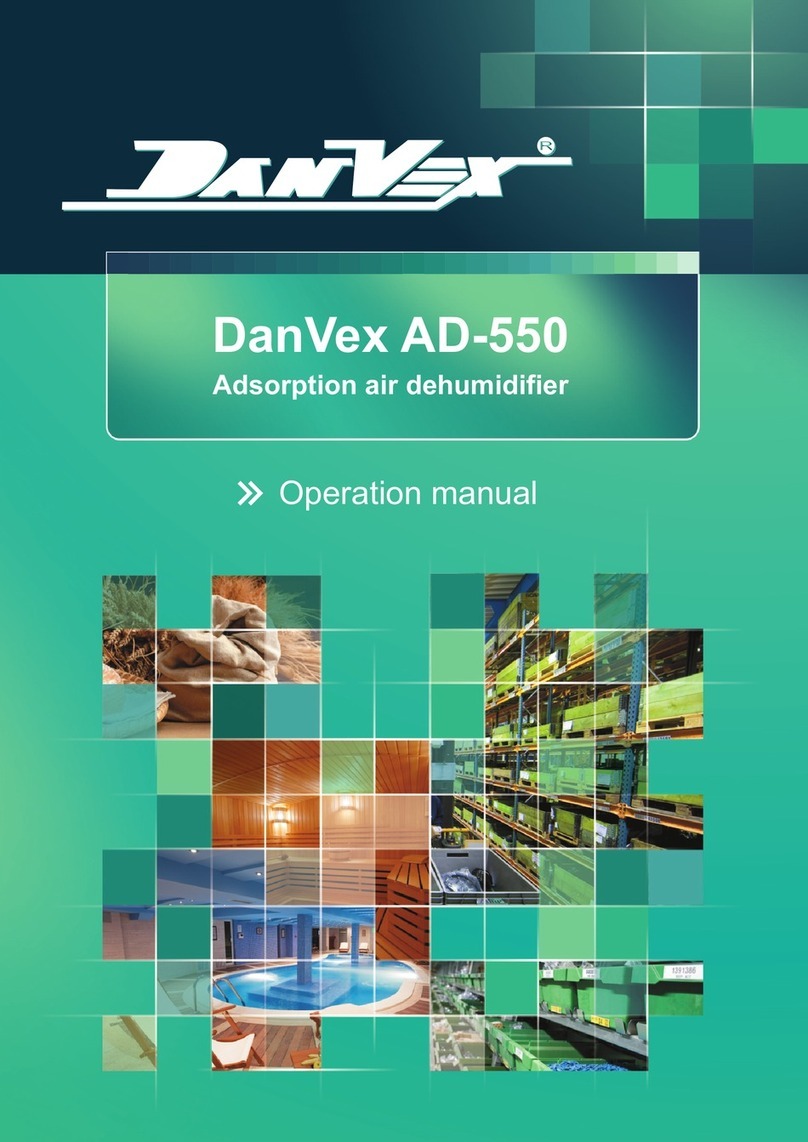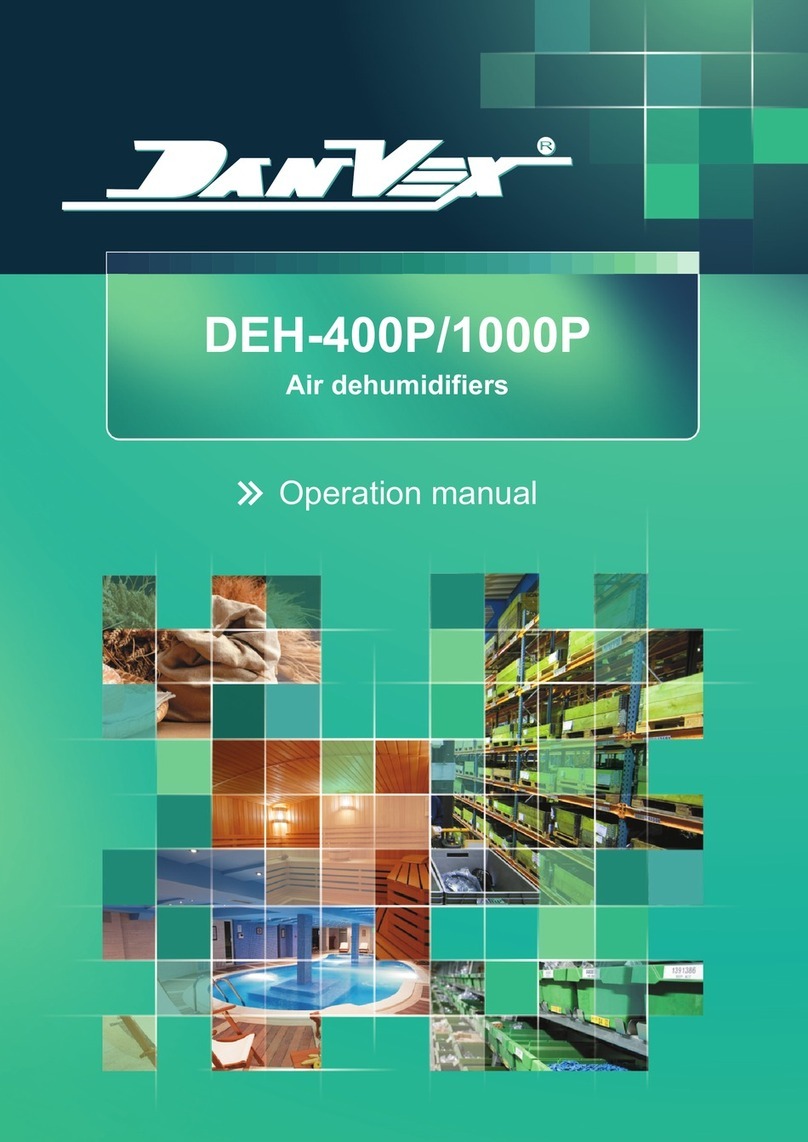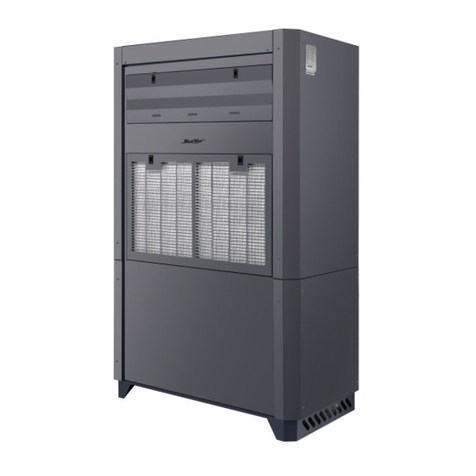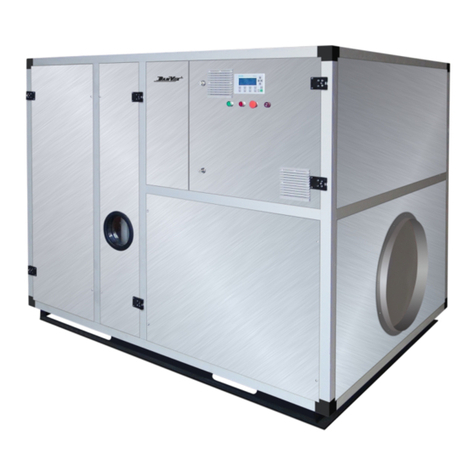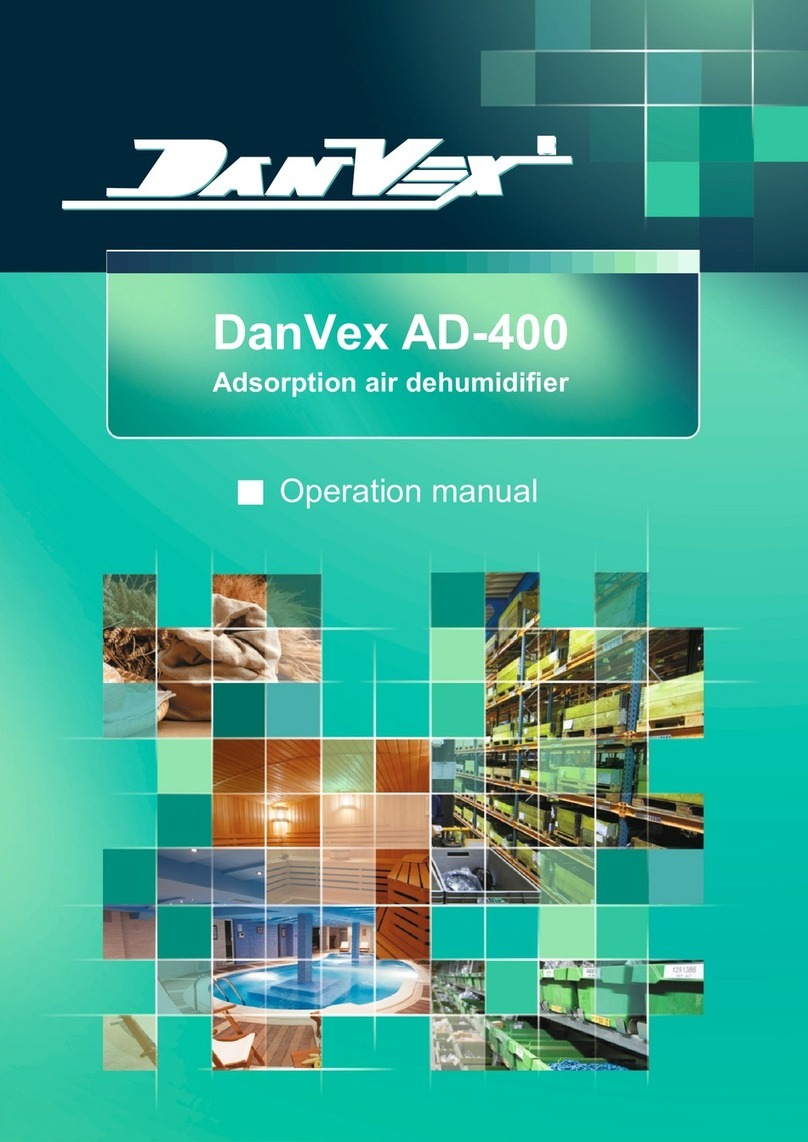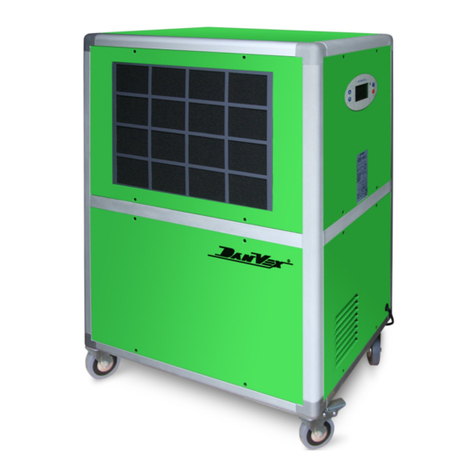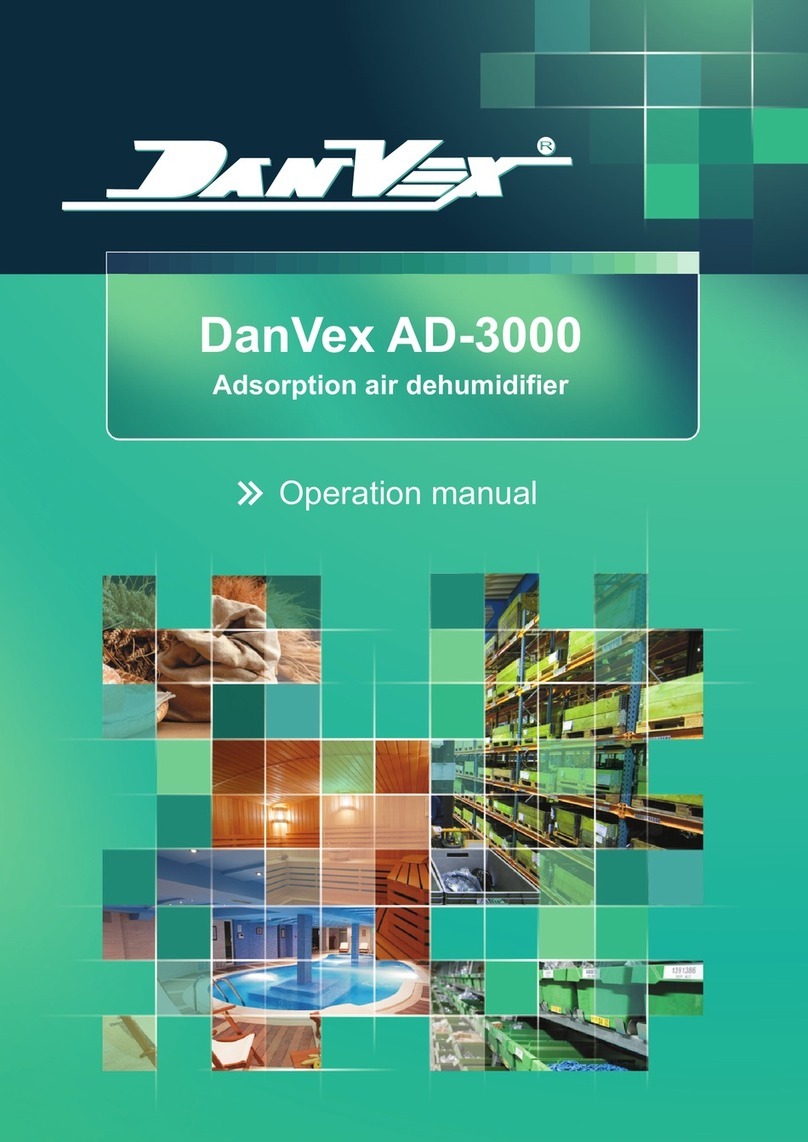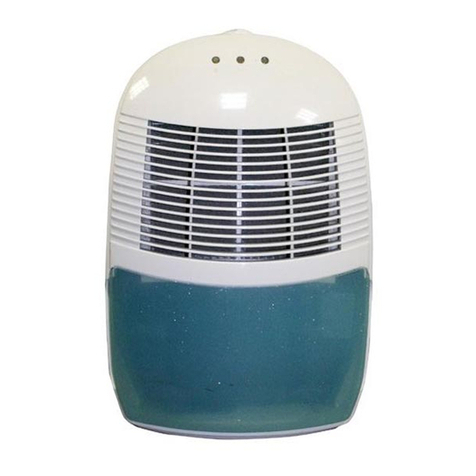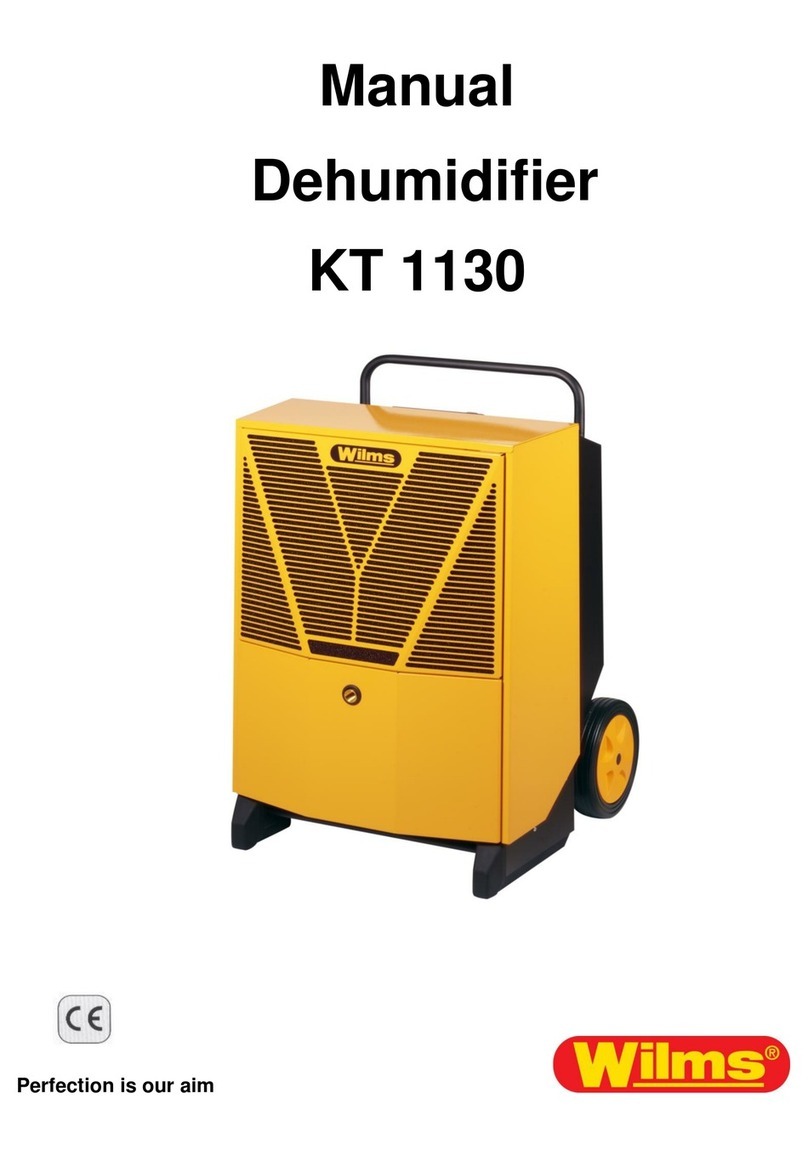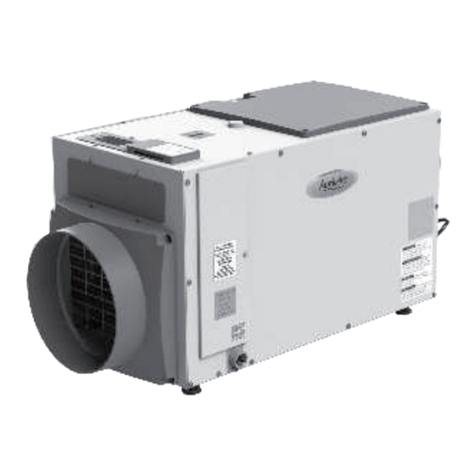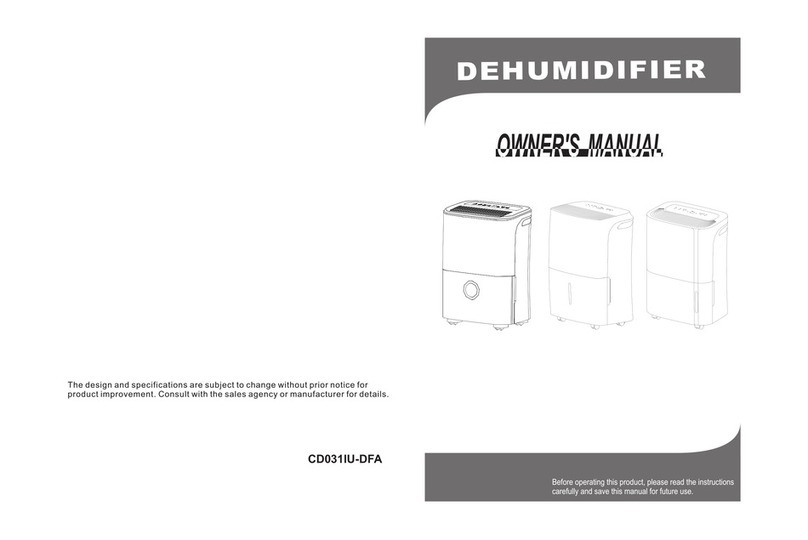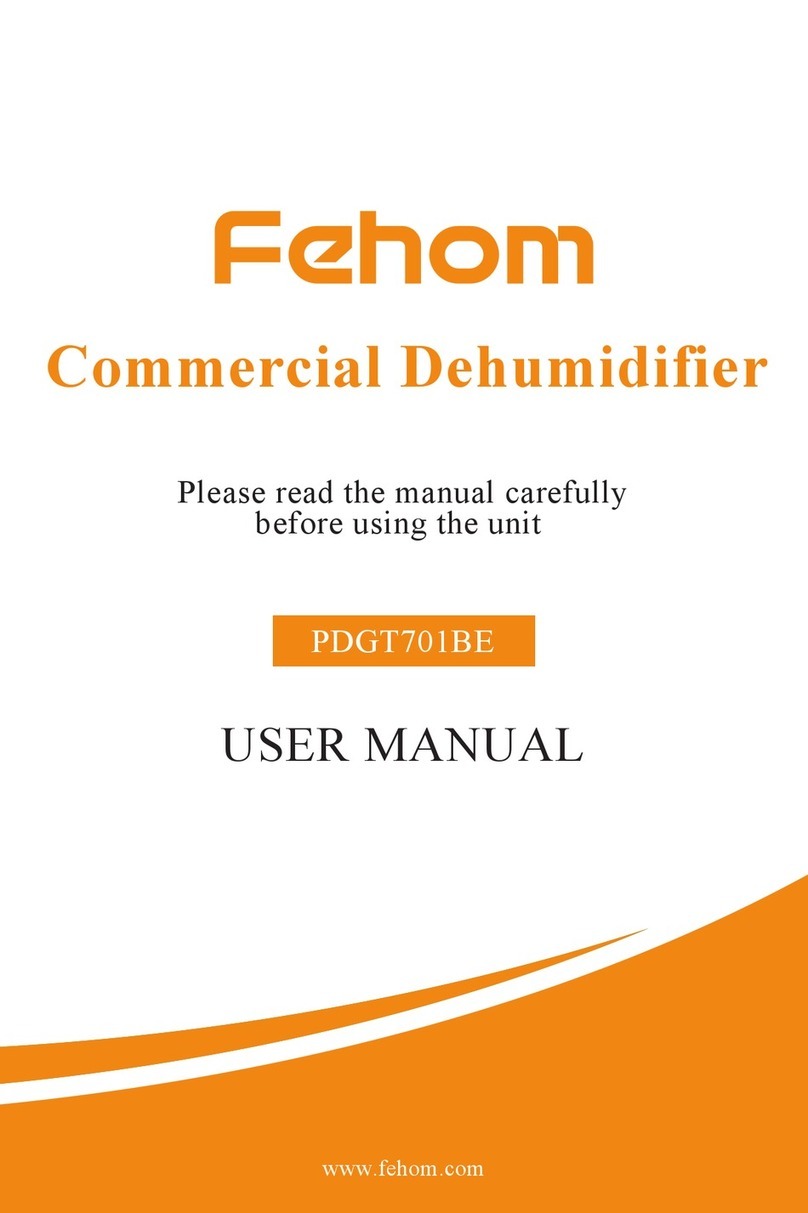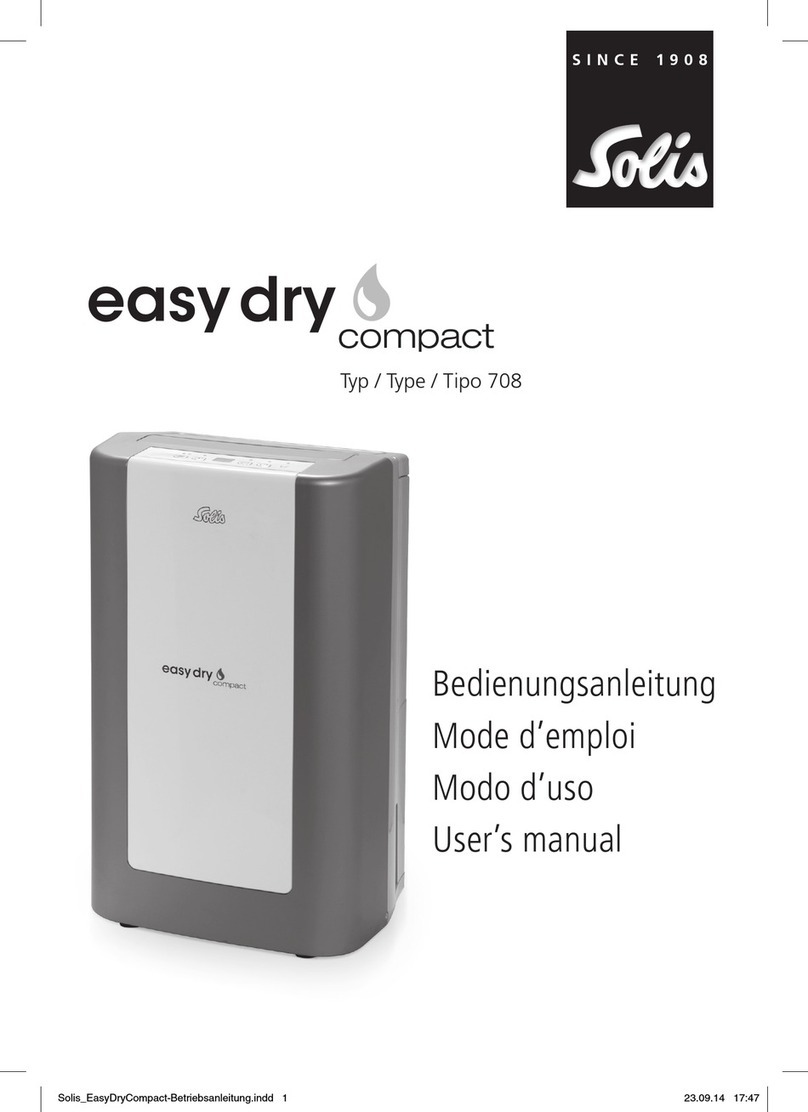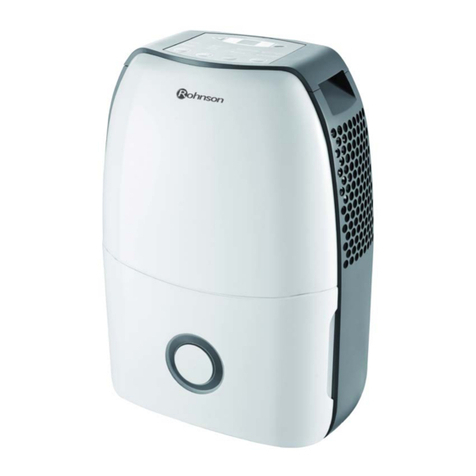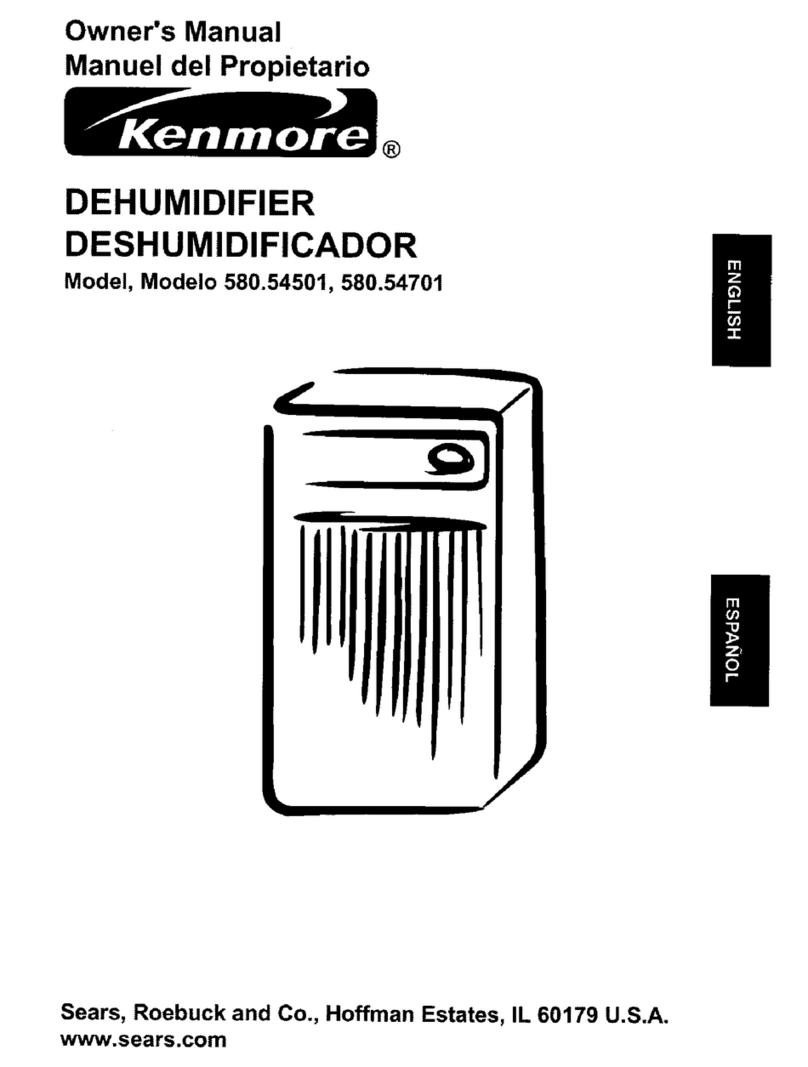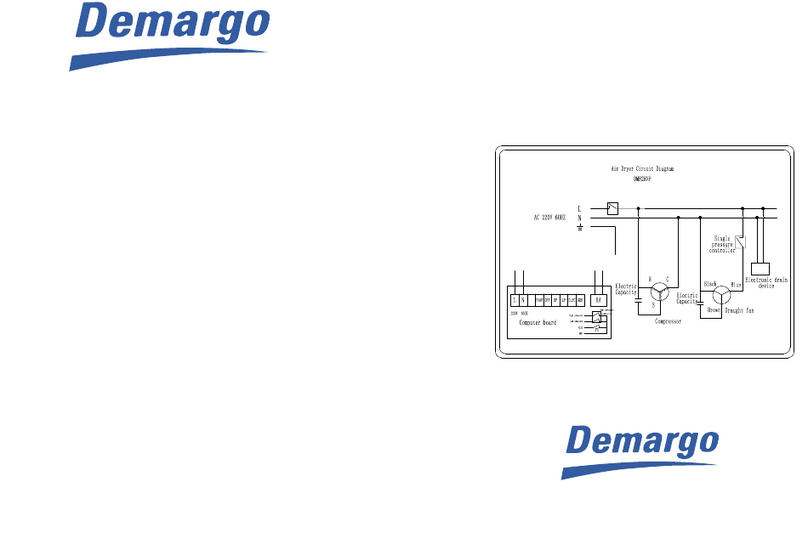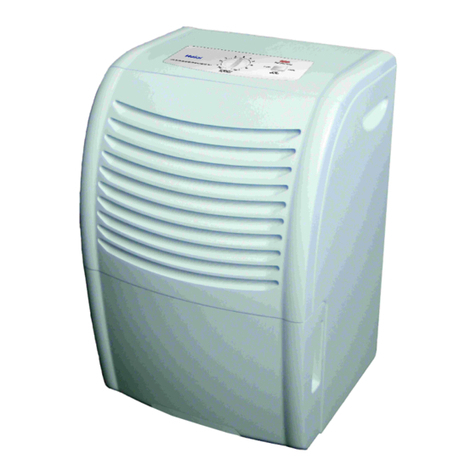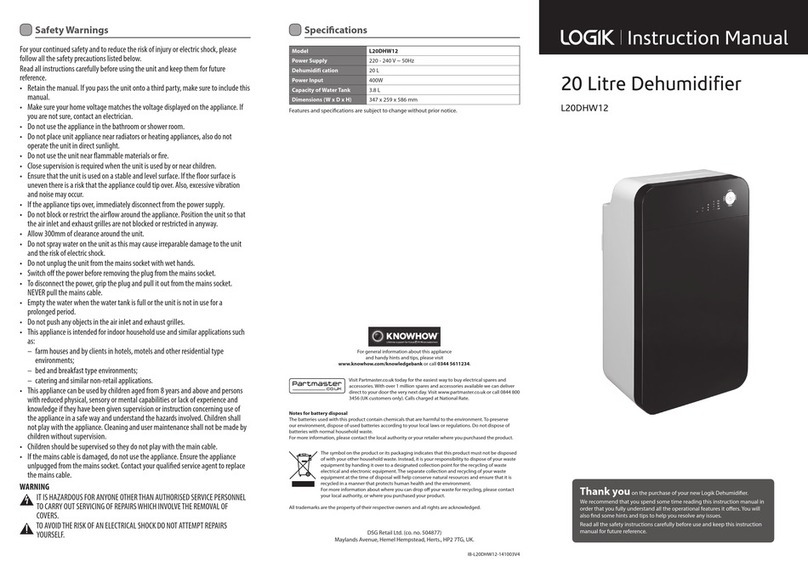R
www.danvex.fi 8
DEHUMIDIFIER DESCRIPTION
The unit is designed for automated, versatile and trouble-free air dehumidification. The unit
operates on condensation principle. It is equipped with a closed loop cooling system, low
noise and low maintenance fan and with a power cable with a plug. The unit's control panel is
equipped with an LCD-display used for the system functional checks. A fully automated unit
control system, a trouble-free regulated humidistat, an integrated overflow system as well as
flexible hose connection for direct condensation discharge assure fail safe and long-term
operation of the unit.
The unit complies with the fundamental safety and health requirements of the existing EU
regulations. The unit is easy and safe to operate.
Unit location
The unit is operated in the buildings where dry air is necessary to prevent significant financial
losses (for example, due to mould formation). The unit is mainly used for drying and
dehumidification in saunas and basins. It is also used for dry air maintenance in storage
areas, archives, laboratories, bathrooms, laundries, changing rooms etc.
Functions
The unit operates on condensation principle.
The fan
The fan intakes moist surrounding air into the units front side through the air filter, evaporator
and condenser. The heat is extracted at the cold evaporator. The air is cooled to below the
dew point. The water vapor contained in the room air deposits as condensate or frost on the
evaporator fins. Dried and cooled air is heated in the condenser (radiator) again. Then it is
discharged to outside, the air temperature is about 5 degrees higher than the room
temperature.
The dried air is mixed with surrounding air again.

